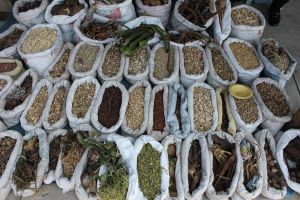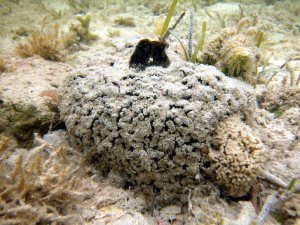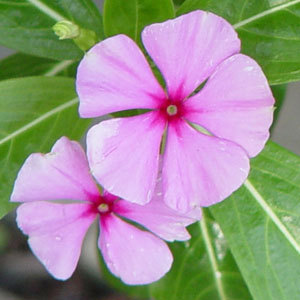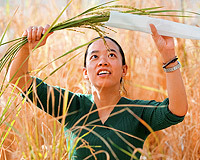Richard Conniff's Blog, page 95
February 10, 2012
The "Germs" that Keep Us Healthy (Save the Planet–Conclusion)
There is one other big reason guys (and drug companies) may soon find themselves paying more attention to biodiversity. "Our minds are going to explode over the next ten years," University of Maryland ecologist Dan Gruner, PhD, told me, "as we learn more about the microbes that are everywhere, including on our bodies, and that keep us healthy all the time."
Gruner studies the complex ways plants and animals interact in habitats from Hawaii to Florida. The hidden players in these transactions are often bacteria, fungi, and other microbial organisms. And with the help of genetic analysis, he says, we are beginning to identify them and understand how they work. Instead of the old "war on germs" mentality, researchers are discovering that having the right balance of microbes is essential to well-being, for both ecosystems and individuals.
People who are obese, for instance, tend to have less microbial diversity in their digestive tracts and more of a bacterial group that's highly efficient at extracting nutrients. That may turn out to be why fat people can eat the same diet as thin people, but still stay fat . Understanding biodiversity on that level and learning how to tinker with it may eventually give doctors a subtle new tool for keeping us healthy—and even for helping fat people become thin.
Understanding diversity on the larger scale, says Gruner, is also likely to show us how thoroughly we depend on an abundance of plants, animals, and microbes for every aspect of our survival. In a world with so much variety, it's easy to shrug it off, or not even notice, when a species goes extinct. But as the number of species thins out, Gruner suspects we may find that wetlands no longer purify our water as efficiently, or the oceans do not produce quite as much oxygen, or our farmlands become just a little less fertile.
Gruner has special reason to believe biodiversity matters. At age 15, he survived leukemia—another win for that little pink flower, the rosy periwinkle. For the rest of us, the real question is whether the natural world will still have the answers, and whether the species that could have saved our lives will still be there, when it's our turn to look death in the eye.
END

February 9, 2012
Looking for the next Viagra (Save the Planet–5)

In Durban's Berea Herbal Market
One standard shortcut, for instance, is to look for remedies from traditional medicine. That's how researchers found metformin, and the drugs derived from the rosy periwinkle, among many others. Even so, I didn't expect much, as an outsider and a product of the technological world, when I visited one such traditional medicine market not long ago in downtown Durban, South Africa. To be honest, I was imagining a single dusty shop with an aging witch doctor gathering cobwebs behind the counter. Instead, I found myself wandering through a vast sprawl of vendors' booths, extending down rows the length of a football field. Plump women in kerchiefs, some of them with their faces painted clay-colored against sunburn, sat behind bin after bin of woody and leafy products, all labeled with Zulu names that meant nothing to me.
But my guide, a traditional medicine practitioner named Jabu Ndholovu, once showed up at the University of KwaZulu-Natal with a bag of woody chips from the roots of a flowering grassland plant said to cure male impotence. The plant's scientific name is Eriosema kraussianum, but the Zulu name has more poetry: bangalala. University chemists duly extracted 50 compounds from the plant and put four of them through the standard laboratory test, using rabbit penile tissue. One turned out to be 85 percent as effective as Viagra. And unlike Viagra, bangalala is a product local people can afford. Biodiversity might thus, in fact, be a means of having better sex. For that matter, Viagra itself is a naturally-derived product, a close chemical variant on a substance, theophylline, originally found in tea. So the future of life on earth and the possibility of sex tonight might, in truth, be closely related propositions.
Researchers who seek clues in traditional medicine markets like the one in Durban mostly run into dead ends. That's the nature of such research. But they persist because local knowledge accumulated over hundreds of years now and then tips the odds in favor of finding something useful. The hitch is that the only people paying attention these days are underfunded government and academic researchers.
Most big pharmaceutical companies don't bother much with drug discoveries from the natural world any more. Instead, beginning in the 1980s, they bought into the myth of humans as a technological super-species. So they now rely mostly on computers and combinatorial chemistry to spin out thousands of closely-related variants on a given molecule. The idea is that they can then browse through this library of synthetic compounds to find substances effective for almost any condition. But so far, critics say, this has turned out to be roughly as effective as working your way through the Manhattan phone directory asking strangers if they happen to have a cure for the common cold. After 25 years of work, and tens of billions of dollars invested, says David Newman, D. Phil., of the National Cancer Institute (NCI), combinatorial chemistry has so far produced only a single new FDA-approved drug.

Natural pharmacy
Newman,who heads the NCI's natural products branch, isn't suggesting that drug companies should give up on the technology. But a better way to make it work, he argues, is by starting with compounds known to be biologically active—that is, the ones found in the natural world. Then you use combinatorial chemistry to add or subtract traits until you arrive at a drug that meets human needs. "As a discovery tool, combinatorial chemistry is terrible," he says, but as "an optimization tool it is magnificent." We just need to acknowledge at the outset that the basic playbook still comes from Mother Nature.

February 8, 2012
Losing the Drug that Could've Saved Your Kid's Life (Save The Planet 4)
Look closely in the medicine cabinet, in fact, and what's striking is just how pervasively nature has shaped our entire pharmaceutical repertoire. Even aspirin was derived originally from the bark of the willow tree. It's also striking just how unpredictable and even downright weird this influence continues to be.
Who would have imagined, for instance, that a marine snail from the Philippines, Conus magus, would give us a new pain killer, Prialt, that lacks the terrible addictiveness of morphine—and yet is 1000 times more potent?
Who would have predicted that a bacterium found in the dirt on Easter Island would provide a powerful immune suppressant, rapamycin, that's now routinely used in organ transplants and as a coating on heart stents? (In experiments on mice, it also seems to have the potential to extend the lifespan of individuals already past middle age.)
Who would have figured that the Pacific yew tree, long considered a trash species, would become the source of the most successful modern drug, taxol, for treating cancers of the breast, ovaries, and if current experiments play out, perhaps also the prostate?
And once we get our minds around the astonishing healing power of these natural medicines, you start to wonder: How come we don't know more? That is, if species are going extinct at a catastrophic rate, what life-altering products are we losing along the way? There are an estimated 350,000 flowering plant species in the world, plus an ungodly number of insects, marine invertebrates, fungi, and bacteria—each equipped with a unique chemical arsenal of some kind.
At most 10 percent of the plants have been tested for their medical potential, says James Miller, PhD, vice president for science at the New York Botanical Garden, and even those have been tested against only a small number of diseases, mostly cancers. The insects and other small species have hardly even been classified by science, much less tested for their potential usefulness.
So when a forest disappears, what may be disappearing at the same time is the drug that could have kept your hair from falling out, or your prostate from moving in where your bladder's supposed to be. We may be losing the drug that could have kept your eight-year-old from dying of a hospital infection, or your mom from fading into dementia. You would think scientists and drug companies would be racing to make these discoveries and figure out what's valuable before it vanishes.
Continued tomorrow, when I'll talk more about looking at traditional medicines.

February 7, 2012
How Nature Saves Your Balls–and Your Heart. (Save the Planet–3)
The rate of testicular cancer among white males has almost doubled in the past 40 years, for unknown reasons, and it is now the most common cancer among men ages 15 to 34.
Fortunately, it is also one of the most curable.
Jonny Imerman was 26 and selling commercial real estate in Michigan when he got it. His oncologist started him on a chemotherapy regimen that featured three potent drugs: Cisplatin, from the heavy metal platinum, bleomycin, an antibiotic from a bacterium, and etoposide, from the roots of the Indian mayapple in the Himalayas. The result? Before this kind of treatment was developed in about 1970, testicular cancer typically spread to other parts of the body and killed 95 percent of its victims. Today, if diagnosed in time, 95 percent of victims recover and go on to lead normal lives.
When he got his health back, Imerman quit real estate to set up a non-profit, Imerman's Angels, which matches cancer victims with mentors of the same age, gender, background, and cancer type. But even with "my head in the middle of all this" cancer stuff, he says, he did not realize that the natural world had saved his life. "You break down the word 'chemotherapy' into 'chemical therapy' and we just assume these are all chemicals. I did not know that so many of them derive from natural things. I bet most doctors don't even know."
It's the same with cardiovascular disease, which is the leading cause of death for American men and also accounts for 30 percent of mortality worldwide. In the United States, deaths from cardiovascular diseases have decreased sharply over the past 15 years. It would be nice to say to that this is because we have learned how important it is to eat smart and exercise more. But the truth is, it's a gift from the natural world.
Researchers from Japan and England first discovered the class of drugs called statins in the 1970s, from close relatives of the fungus that gave us penicillin. Statins went on to demonstrate a remarkable ability to knock down levels of bad cholesterol, the low-density lipoproteins (or LDLs) largely responsible for clogging arteries. That's meant fewer heart attacks and strokes since statins became widely available in the 1990s. Though some critics worry that statins are now overprescribed, British researchers have calculated that giving statins to 10 million high-risk people results in 50,000 lives saved per year.
Our improving cardiovascular health also comes courtesy of a pit viper. The fer-de-lance is one of the scarier snakes in South America. I still have bad dreams about a night long ago, when I was staggering out of a rainforest in Peru, and one of them slipped across the trail just behind me and ahead of the next person in line. A bite typically contains more than twice the venom needed to kill a human adult, and one of the ways it kills is by causing a drastic drop in blood pressure. Beginning in mid-twentieth century, Brazilian researchers studying the venom found that it acts on a blood pressure control mechanism, angiotensin, which was then completely unknown to science. The fer-de-lance thus opened a new window into the workings of the human heart—and also gave us a major new class of drugs, the ACE inhibitors (named for their effect on the angiotensin converting enzyme). Since their introduction in the 1980s, these drugs have become our most effective remedy for hypertension and congestive heart failure.
Ken Cole might not sound like a natural friend of the fer-de-lance. He's a petrochemical lab technician in Houston. But when he made a rare medical visit with a cold a few years ago, age 34, height 5'8," weight 250 pounds, his doctor promptly put him on an ACE inhibitor for high blood pressure, and a statin for high cholesterol. Cole also had undiagnosed type 2 diabetes, and that visit changed his life: He took up cycling, became a gym rat, and dropped more than 50 pounds. If he is careful, he says, a drug called metformin should keep him from becoming insulin-dependent.
That makes him a natural medicine triple-hitter: Metformin comes from a weedy plant called goat's rue.
To be continued.

Helicopter Crash Takes Ocean Cinematographer

With regret, I am adding a new name to the Wall of the Dead. Today's New York Times reports that Mike DeGruy, a great cinematographer of the natural world, has died. We worked for National Geographic Television at about the same time, though not together. Here's the obituary, with a last paragraph that says a lot about personal courage:
Mike deGruy, an Emmy Award-winning documentary filmmaker and marine biologist who through the lens of his submersible cameras transported viewers to the deepest crags of the oceans and face to face with swirling, pulsing sea creatures, died on Saturday in a helicopter crash in Australia. He was 60.
National Geographic, for which Mr. deGruy made many television documentaries, said in a statement that he and Andrew Wight, a pilot and also a filmmaker, were killed when their Robinson R44 helicopter went down shortly after takeoff from an airstrip in Jasper's Brush, 80 miles south of Sydney.
In more than two-dozen documentaries over three decades, Mr. deGruy (pronounced de-GREE) filmed killer whales snatching sea lion pups off the beaches of Patagonia; lobsters migrating in the Bahamas; tiger sharks feeding on albatross in Hawaii; hydrothermal vents deep in the Atlantic and the Pacific; and the diversity of cephalopods like squid, cuttlefish and octopi.
In 2002 his cinematography on "The Blue Planet: Seas of Life," an overview of the world's oceans and their inhabitants shown on the Discovery Channel and the BBC, won both an Emmy and an award from the British Academy of Film and Television Arts.
Mr. deGruy also documented threats to the world's coral reefs, the devastating impact of El Niño on California's marine mammals, and the dwindling of shark populations in the Great Barrier Reef, among other projects. He was usually not only behind the camera in these films but sometimes served as host as well.
In 2005, working with James Cameron, the Academy Award-winning director of "Titanic," Mr. deGruy supervised underwater photography for "Last Mysteries of the Titanic," a Discovery Channel documentary series in which submersible cameras roamed the labyrinth of the ship to reveal rooms and artifacts not seen since it sank in 1912.
In a statement, Mr. Cameron called Mr. deGruy "one of the ocean's warriors — a man who spoke for the wonders of the sea as a biologist, filmmaker and submersible pilot, and who spoke against those who would destroy the sea's web of life."
Mr. Wight, 52, had also worked with Mr. Cameron on deep-sea expeditions from which the films "Ghosts of the Abyss," "Aliens of the Deep" and "Expedition: Bismarck" were made. They had recently co-produced Mr. Wight's first feature film, "Sanctum 3D."
Michael Verloin deGruy was born in Mobile, Ala., on Dec. 29, 1951, to Frank and Katherine deGruy. He swam in the swamps of the streams emptying into Mobile Bay as a boy, was a springboard diver on his high school swim team, and took up scuba diving along the Gulf Coast. He graduated from North Carolina State University with a degree in marine zoology, then moved to Hawaii and eventually became a curator at the Waikiki Aquarium. He later moved to the Marshall Islands, where he was manager of the Mid-Pacific Marine Laboratory. He also learned the complexities of underwater photography and began making documentaries.
In 1979 he moved to California and founded a production company, the Film Crew. Eight years later he met Mimi Armstrong, an associate producer of a documentary about the American Trust Territories in the Pacific. They married in 1989 and lived in Santa Barbara, Calif.
Besides his wife, Mr. deGruy is survived by his mother; a son, Maxwell; a daughter, Frances; and three brothers, Frank, Glenn and Ken.
Not all of Mr. deGruy's filming was done with remote submersibles. He often slipped below the surface himself, camera in hand — despite the fact that on April 2, 1978, while diving in a remote area of the Enewetak Atoll in the Marshall Islands, he was attacked by a shark, and part of his right arm was torn off. After 11 operations, with only partial use of his right hand, he returned to the sea.

February 6, 2012
The Sponge that Turned the Tide Against AIDS: Save the Planet (2):
But let's face it: Guys are not likely to run around with a "Save the rosy periwinkle" bumper sticker, are they? So maybe I should backtrack a little, to explain why protecting the natural world suddenly seemed to me to be much more than just a nice story: It's what we eat, drink, and breathe. It's how we keep ourselves alive. It is, in fact, a matter of life-and-death urgency for all of us.
Over beers one evening not long ago, I was complaining to a friend about a British opinion poll. Asked to define the word "biodiversity," a lot of people thought it was a new brand of laundry soap. And these were Brits, meaning people who spent their formative years being spoon-fed nature by David Attenborough and the BBC.
In fact, biodiversity is the term for how many kinds of plants and animals live in a given area. It's become shorthand for the health not just of local habitats, but of the entire planet, and the prognosis is not good. Because of human overpopulation, deforestation, climate change, and other factors, species are now disappearing at a rate last seen 65 million years ago, during the catastrophic era when the dinosaurs went extinct. Only this time, we get to play the dinosaurs.
"Too depressing," my friend objected. "If you want to make guys care about biodiversity you have to tell them it will help them live longer, avoid going bald, and have better sex." I rolled my eyes. But a vision flashed across my mind of a guy in a bar, weighing two big ideas, like ripe melons, in either hand: The future of life on Earth? Or sex tonight?
So I soon found myself accumulating instances of how the natural world does, in fact, makes guys' lives better. I dubbed it "The Manhood Naturally File." Or "Biodiversity builds better bodies 10 million ways." (That's a rough estimate of how many species may be living on earth right now). Exploring our unsuspected dependence on nature intrigued me because men in particular seems to suffer from a modern delusion—that we have become a sort of technological super-species, aloof from the natural world, safely ensconced in our houses and cars, and walled off by science from diseases, like polio and plague, which once routinely killed us.
Even when a terrifying new epidemic like AIDS springs up, we manage to bring it under control through what feels like the magic of technology. David W. Purdy, a former professional sports manager, was diagnosed as HIV-positive in 2002. The count of immune system T Cells in his blood was 49, down from a normal range above 800. His doctor started him on AZT, an anti-retroviral drug that sounds like the epitome of manmade laboratory medicines. Google it, and you will learn, not too helpfully, that it is "a nucleoside analog reverse-transcriptase inhibitor."
"When we think about drugs," says Purdy, "we envision a man with safety glasses and test tubes and microscopes, creating the drug in the lab, which isn't true."

Tethys crypta
These days AZT does in fact get produced synthetically in a laboratory-like setting. But it originally came from a sponge discovered on a Caribbean coral reef in 1949. So the real credit for turning HIV from a relentless killer into a manageable disease belongs not to technology but to the natural world. AZT and a cocktail of other anti-retrovirals also saved Purdy's life, bringing his T cell count back up around 850.
In fact, about half the drugs we depend on for our modern sense of freedom from disease come directly from the natural world, or are produced synthetically based on natural models. That's been true for almost all antibiotics, for instance, since Alexander Fleming's 1928 discovery of penicillin from the same mold that produces the blue in blue cheese and the fuzz on rotting fruit. The antibiotic era, starting in World War II, has changed the world in ways we can now scarcely imagine. Maybe fungi and bacteria—the source of most antibiotics—aren't what leap to mind when we imagine the wonders of nature. But without them, you and I might well be dead.

Save The Planet, Save Your Ass (Part 1)
The March issue of Men's Health features my article on why guys should care more about the natural world. My working title was "Biodiversity for Guys," and then, "Manhood, Naturally." But I think MH writes better headlines (above) than me. I'll post the article in sections over the next few days. Here's the opener:

Hahn
David Hahn was a couple of years out of college, working gigs as a piano player and dreaming about someday making it to Broadway, when he noticed the first ten pounds come off his waistline. "I was working out, and it was suddenly like I was doing all the right things. I started giving people dietary advice." But the weight kept dropping away. "When you lose 30 pounds and you're not trying that hard, you start to think, 'Wait a minute, something's going on here.'"
Doctors diagnosed everything from allergies to tropical infection. Then a CAT scan brought the problem into terrifying focus: "I had a giant tumor in the middle of my chest, wrapped around my aorta, my heart, spine, and lungs. They showed me the picture, and I thought, 'Damn.'" Lymphoma. "I was 24. Nobody gets cancer at 24."
Though he did not know it at the time, his survival now depended on "this little pink flower" from halfway around the world. Doctors started him on six months of chemotherapy, and it felt like there was nothing on God's green earth remotely natural about it.
His regime was called ABVD, with the D standing, he says, for "I forget, something nasty." But A and B are both drugs derived directly from bacteria in the natural world. (One strain was developed from a soil sample taken from the grounds of a thirteenth century Italian castle.) The V  is vinblastine, from that little pink flower. Sometime in the 1950s, researchers from the drug company Eli Lilly began studying the rosy periwinkle in Madagascar, where it is endangered in the wild because of massive deforestation. It led to two drugs, vincristine and vinblastine, and they gave life back to people facing diseases that until then were routinely fatal–leukemia and lymphoma.
is vinblastine, from that little pink flower. Sometime in the 1950s, researchers from the drug company Eli Lilly began studying the rosy periwinkle in Madagascar, where it is endangered in the wild because of massive deforestation. It led to two drugs, vincristine and vinblastine, and they gave life back to people facing diseases that until then were routinely fatal–leukemia and lymphoma.
Hahn was like a lot of guys I talked with in the course of researching this story: They ate healthy, they worked out, they thought happy thoughts. Then one day they woke up with nightsweats, a lump, a cough that wouldn't go away. If they were lucky enough to survive, they tended to thank their doctors or the drug companies. Hardly any of them thought, "Whoa, that's weird: The natural world just saved my life."
Maybe nobody thinks it because we take the natural world for granted. Plants and animals do great things for us all the time, even when we are perfectly healthy: The very air we breathe depends on biodiversity: Prochlorococcus, an ocean-dwelling bacteria that was completely unknown until the 1980s, produces about 20 percent of the Earth's oxygen. Trees and other plants do the rest.
And when we're sick? That flower didn't just save Hahn's life. It also turned around his career: "I kind of wanted to make a go of the Broadway thing before cancer, but I just didn't have the guts to do it," he says. Then, in chemo, "I was like–you know what, man?–if I'm going through all this to save my life, I'm going to have a life that's worthwhile." He's now on Broadway, playing piano for Harry Connick Jr., in "On a Clear Day You Can See Forever."

Fast Track Breeding for a New Green Revolution

A Cornell researcher working with rice (Cornell University Photography/Lindsay France
This is a new piece I wrote for Yale Environment 360:
In Zambia during the current planting season, a corn crop will go into the fields that begins the process of rapidly boosting vitamin A content by as much ten-fold — helping to address a nutritional deficiency that causes 250,000-500,000 children to go blind annually, most of them in Africa and Asia. In China, Kenya, and Madagascar, also this planting season, farmers will put out a crop of Artemisia annua that yields 20 to 30 percent more of the chemical compound artemisinin, the basis for what is now the world's standard treatment for malaria.Both improvements are happening because of fast-track breeding technology that promises to produce a 21st-century green revolution. It is already putting more food on tables — though it's unclear whether it can add enough food to keep pace as the world's human population booms to 9 billion people by 2050.
Fast-track breeding is also giving agronomists a remarkable tool for quickly adapting crops to climate change and the increasing challenges of drought, flooding, emerging diseases, and shifting agricultural zones. And it can help save lives: In the absence of prevention, half those victims of vitamin A deficiency now die shortly after going blind, according to the World Health Organization; and in 2010, lack of adequate treatment — meaning artemisinin — contributed to the deaths of 655,000 children from malaria.
The fast-track technology, called marker-assisted selection (MAS), or molecular breeding, takes advantage of rapid improvements in genetic sequencing, but avoids all the regulatory and political baggage of genetic engineering. Bill Freese, a science policy analyst with the Center for Food Safety, a nonprofit advocacy group, calls it "a perfectly acceptable tool. I don't see any food safety issue. It can be a very useful technique if it's used by breeders who are working in the public interest."
Molecular breeding isn't genetic engineering, a technology that has long alarmed critics on two counts. Its methods seem outlandish — taking genes from spiders and putting them in goats, or borrowing insect resistance from soil bacteria and transferring it into corn — and it has also seemed to benefit a handful of agribusiness giants armed with patents, at the expense of public interest.
By contrast, molecular breeding is merely a much faster and more efficient way of doing what nature and farmers have always done, by natural selection and artificial selection respectively: It takes existing genes that happen to be advantageous in a given situation and increases their frequency in a population.
In the past, farmers and breeders did it by walking around their fields and looking at individual plants or animals that seemed to have desirable traits, like greater productivity, or resistance to a particular disease. Then they went to work cross-breeding to see if they could tease out that trait and get it to appear reliably in subsequent generations. It could take decades, and success at breeding in one trait often meant bringing along some deleterious fellow traveler, or inadvertently breeding out some other essential trait.
Molecular breeding enables growers to get the improvements they want far more precisely, by zeroing in on the genes responsible for a given trait. If genetic engineering is a tool for "bludgeoning the genome," as Cornell University researcher Susan McCouch puts it, what molecular breeding does instead is to "open a window" into how the genome works, enabling researchers to collaborate with it.
Sequencing the entire genome of a species is the first step, and this process, which cost millions of dollars a decade ago, is down now to the low thousands. Next, researchers sort out which genes are responsible for a given function, the bottleneck in the process so far, though McCouch says it becomes faster and cheaper with each new species that gets sequenced, because nature tends to employ the same mechanisms from one species to another. Finally, researchers map out markers — bits of genetic material that are linked to those genes, to flag whether or not the desired genes are present in a given individual.
"It's not uncommon for a company to want to combine 10 or 20 traits in a variety," says Harry Klee, a specialist in tomato breeding at the University of Florida in Gainesville. In the past, to get the perfect combination of traits using conventional methods, "you would have to put out millions of plants in the field." Instead, breeders typically simplified, narrowing down their wish list to a few key traits.
With tomatoes, for instance, as many as 30 or 40 different genes influence taste — too many variables to juggle. So shelf life and appearance inevitably trumped taste. "But this is where molecular breeding really pays off," says Klee. Breeders now use genetic markers to automatically screen one-inch-tall seedlings and immediately weed out the 99 percent they don't want, cutting years off the breeding timetable. That makes it easier to get to desirable cross-breed quickly — and also stack up a complex array of traits in a single strain. As a result, says Klee, even mass-produced supermarket tomatoes should actually taste good five years from now.
In the two decades since researchers first proposed molecular breeding in 1989, high costs and the difficult work of discovery have largely confined the technology to big companies working in commodity crops like corn and soybeans. But as costs fall even faster than Moore's Law would predict and genetic methods become routine, researchers are now also applying them to the so-called orphan crops on which much of the developing world depends. Molecular breeding is not as effective so far for crops that propagate clonally, including such tropical staples as cassava, sweet potato, yams, bananas and plantains. But for rice and many other crops, it enables breeders to quickly tailor a plant to a particular environment or taste.
"Every village has its own favorite rice," says Ian Graham, director of the University of York's Centre for Novel Agricultural Products. "The challenge is if you come up with a great trait, how on earth do you put that trait into all these local varieties easily, economically, and quickly? Sequencing gives you the tool to do it. That's the secret of really making molecular breeding work for the developing world." There are still economic barriers, he says, but equipment to set up a basic laboratory in a developing country "is on the order of $100,000 instead of millions." Thus genetic methods have the potential to make breeding more local, more democratic, and aimed at enhancing biological and agricultural diversity, instead of stripping it away.
The Green Revolution of the 1960s largely achieved its huge leap in productivity by streamlining plants and farming methods to work across hundreds of millions of hectares, regardless of local tastes or environments. It re-designed plants for high-input industrial agriculture, so they could respond to an intensive regimen of fertilizers, water, and pesticides, regardless of the environment. But the molecular Green Revolution will work, says McCouch, by fine-tuning crops to perform in a particular environment, minus additional input. Farmers are backing off growing rice in water, for instance, "because they can't afford the water, there isn't enough water in the world."
Molecular breeding will also build crops, McCouch says, to "respond constructively to changes in the environment that we cannot predict," like flooding and drought. "A really big challenge in discovery genetics right now," she says, "is to understand how plants sense environments: How do they count number of days? How do they count the number hours of daylight? How do they know when to grow and when to hold their breath if they're underwater? Once we make the discovery of which genes allow the plants to sense these things, then we can do marker-assisted selection" and move those genes into local varieties that already have the other traits farmers want.
The potential for molecular breeding to help farmers adapt to a rapidly changing world became evident last month when Nature Biotechnology published an article about rice breeding in Japan. Geneticists at the Iwate Biotechnology Research Center 130 miles north of Fukushima were already using molecular breeding to improve the cold-tolerant rice variety preferred by farmers there, when last year's earthquake hit. The subsequent tsunami left a huge swath of rice paddies — 58,000 acres, representing almost a fifth of the nation's rice supply — contaminated with too much salt for conventional farming. The researchers promptly switched their focus to salt-tolerant genes. Instead of taking five years to produce a suitable crossbreed by conventional methods, they now hope to deliver those seeds to affected farmers in just two years, for the 2014 growing season.

February 2, 2012
Earth Hugger Free Climbs The Big Wall

Back when I owned a three-story stone house in the Connecticut River Valley, I often found the shed skins of black snakes in the attic. And of course I wondered how on earth they got there.
This video explains it.
Fair warning: If you are scared of snakes, you may never want to open your windows again.

Back when I owned a three-story stone house in the Conne...

Back when I owned a three-story stone house in the Connecticut River Valley, I often found the shed skins of black snakes in the attic. And of course I wondered how on earth they got there.
This video explains it.
Fair warning: If you are scared of snakes, you may never want to open your windows again.




